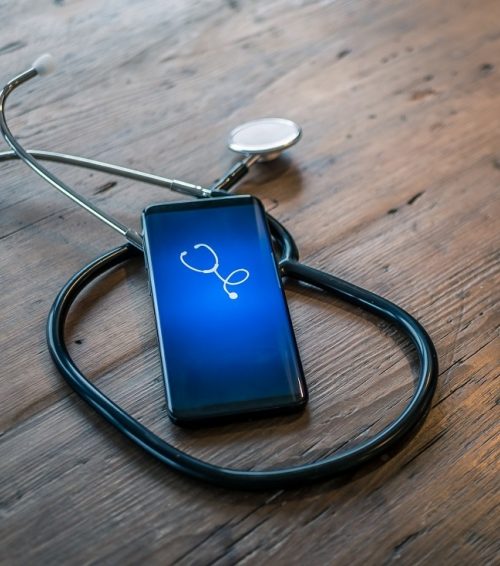
If you read our last piece on prepping your virtual exam room, you know a few simple tweaks and tricks that can make your venture into telemedicine a success. But, proper lighting techniques and what not to wear isn’t all you need to know.
In this second piece of our two-part series on readying your virtual exam room, we’ll discuss the telemedicine equipment you need to provide remote patients with the best possible care:
(1) A Good Webcam
While not technically telemedicine equipment nor required in every state, video quality is understandably a major component of a successful virtual visit. Not only does a high quality video help project a professional appearance to patients, but it also ensures a proper and accurate assessment of the patient.
For healthcare facilities with multiple telemedicine rooms, a high-end, consumer-grade webcam is an expensive yet still excellent choice. For a fraction of the cost of most business-grade products — costing anywhere from $80 to $130 instead of $1000 or more — these devices will still have many of the same capabilities and video quality as their costly counterparts.
That said, context informs need: A dermatologist running both a virtual exam room and patient-site would need a high-quality, high-resolution video, especially on the patient’s side, to capture skin pigmentation, condition, and blemishes whereas a mental health professional conducting a therapy session doesn’t necessarily need the same video quality.
(2) Reliable High-Speed Internet
Once you’ve chosen cameras, it’s time to check your connectivity. Internet speed and bandwidth are paramount to delivering data to and receiving data from patients. To ensure your internet is reliable and capable of supporting telemedicine, call your internet service provider and see if they can accommodate the bandwidth you need.
Your internet provider should be able to configure your network so that it best serves the sort of “two-way” traffic telemedicine calls require; the constant stream of uploading and downloading inherent in video conferences requires a network capable of supporting it. Moreover, they may have solutions to help you maintain a higher level of network reliability without breaking the bank on networking equipment and services.
(3) A Failover Line
While a reliable internet connection is necessary for any facility offering telemedicine services, sometimes even the most reliable of networks can fail. To protect your telemedicine services from unexpected data outages, investing in a secondary network line — a consumer broadband network or even a 4G LTE cellular connection — is something any healthcare facility should look into.
In fact, this safeguard goes beyond your telemedicine needs: With most health record systems and devices requiring an internet connection, ensuring your facility is fully operable at all times now means having a trustworthy internet connection at all times. Ask your IT team about the possibility of a failover line before you regret not having it in place.
(4) Optional Optimization Tool: SD-WAN
Emerging technologies such as software-defined wide area networks (SD-WANs) aren’t necessary for telehealth operations, but they can be hugely helpful in terms of visual quality, consistent streaming, and even long-term cost savings. This sort of telemedicine equipment tends to be used by corporations with multiple locations; a central, cloud-based network allows the various facilities to connect and share data.
A system with multiple telehealth locations could use SD-WAN technology to link the facilities, reducing the need for several expensive broadband packages through its ability to automatically identify and create an optimal network path. There’s a reason so many businesses in and outside of healthcare are experimenting with the technology — ask your IT team if it might be appropriate for you.
(5) Digital Medical Scopes and Accessories
Digital medical stethoscopes are the highly functional high-tech tool that telemedicine has been waiting for. The stethoscope works by utilizing the microphone port on the patient’s device to capture and then stream audio files to the provider. Requiring very little on the provider side — just a set of high-quality, over-ear headphones — physicians are able to analyze the audio data in real-time.
To keep these recordings for future reference or study, providers and their facilities may want to consider investing in some sort of HIPAA-compliant networked file storage system.
(6) Tablet(s)
Tablets are a perfect tool for any healthcare facility to invest in; they’re versatile, making it easy to adapt to any practice and its needs with little more than an app download or hardware purchase. Providers can use a tablet as a sort of enhanced clipboard, taking detailed patient notes that can easily be transferred to electronic health record systems.
Many digital health accessories such as the digital stethoscope have their own apps, making it easier for medical providers to transmit, store, and analyze their patients’ data.. Although a tablet won’t take the place of a full PC, it can be an indispensable tool all the same.
(7) Visual Aids
The same visual aids used in an in-person visit can also work as valuable telemedicine equipment. Pain scales, portion size guides, visual care instructions, and other common aids can help make telehealth appointments run smoothly, quickly, and more efficiently than they may have otherwise.
Be sure these sheets and posters are large and clear enough to translate well into a video chat window, or configure a way to screen-share digital versions of them. For patients and providers wary of telemedicine, these familiar aids can act as reminders that this new form of care delivery is as effective and personal as a traditional appointment.
